- Home
- Clarice Lispector
The Apple in the Dark
The Apple in the Dark Read online
THE APPLE
IN THE DARK
THE TEXAS PAN AMERICAN SERIES
1HEAPPLE
1HEDARK
by Clarice Lispector
Translated from the Portuguese, with an
introduction by Gregory Rabassa
UNIVERSI1Y OF TEXAS PRESS
AUSTIN
International Standard Book Number 0-292-70392-9
Library of Congress Catalog Card Number 86-50619
Originally published in Portuguese as
A Ma�d no Escuro by Livraria Francisco Alves
Copyright© 1961 by Editora Paulo de Azevedo
Ltda.
Translation by Gregory Rabassa
Copyright© 1967 by Alfred A. Knopf, Inc.
All rights reserved
Printed in the United States of America
First University of Texas Press Edition, 1986
Requests for permission to reproduce material from
this work should be sent to Permissions, University
of Texas Press, Box 7819, Austin, Texas 78713-7819.
The Texas Pan lmerican Series is published with the
assistance of a revolving publication fund established
by the Pan American Sulphur Company.
BY CREATING all things, he entered into everything.
By entering into all things, he became what has
form and what is formless; he became what can
be defined and what cannot be defined; he became
what has support and what has no support; he
became what is crude and what is delicate. He
became every kind of thing: that is why wise men
called him the Real One.
The Vedas (the Upanishads )
�Contents
I • How a Man Is Made
1
II The Birth of the Hero
123
·
III The Apple in the Dark
207
·
'Jntroduction
CLARICE L1sPECTOR was born in Checkelnik, Ukraine, in 1924, a
purely incidental fact in her life, as her parents, already en route
to embark for Brazil at the time, had merely paused in their
journey long enough for their second daughter to be born. The
family settled in Recife, and Clarice attended school there until
the age of twelve, when the family moved to Rio de Janeiro.
Clarice completed her secondary schooling in the capital and
entered the Faculty of Law at the university there, from which
she was graduated in 1944. In 1943 she had married Mauri
Gurgel Valente, a fellow student who entered the foreign service
of Brazil upon graduation. Her husband was posted to Naples in
1944, and Clarice spent many of the following years outside
Brazil, eight of them in the United States. She did most of her
writing abroad, and her two sons were born overseas. In 1959 she
returned to Brazil, and she has lived in Rio de Janeiro ever since.
She had begun writing while she was still in school; and while
doing editorial work to help support herself, she struck up a
friendship with the novelist Lucio Cardoso, who encouraged her
and read her works. He was responsible for the title of her first
novel, Perto do Cora�iio Selvagem (Close to the Savage Heart),
a name he had drawn from Joyce' s Portrait of the Artist as a
Young Man. This novel, published in 194 3, was both a critical
and a financial sucess. It was followed by two more novels. 0
Lustre (The Chandelier) in 1946 and A Cidade Sitiada (The
Besieged City) in 1949. During these years she had also written
several short stories, many of which appeared in the magazine
Senhor and came out in book form as Alguns Contos (Some
Stories) in 1952 and La�os de Familia (Family Ties) in 1959.
This latter collection contains her best-known story, "O Pro-
( ix)
I N T R O D UC T I ON
fessor de Matematica," which has appeared in English in Odyssey Review as "The Crime of the Mathematics Professor." A Ma�a no Escuro (Eng. tr., The Apple in the Dark) appeared in
1961 and was at once accepted as her finest work so far. A collection of short stories and chronicles, A Legiiio Estrangeira (The Foreign Legion), was published in 1964, the same year as her
latest novel, A Paixiio segundo G. H. (The Passion According to
G. H.).
The style in all of these works is interior and hermetic. In
most cases the action is seen from the point of view of the
characters involved, and the description is also likely to be made
through their eyes. This fact places her among the new vanguard
of writers who have appeared in Brazil since the end of World
War II and who have taken a further step along the path initiated by the so-called "Modernist" renovation of 1922. Because the Modernist movement was so broad as to defy exact definition, including, as it did, novelists and social scientists as well as poets like Mario de Andrade, who were most responsible for its
inception, many of its effects were dissipated in the vastness of
what would actually seem to be normal course of literary development in Brazil, whether a movement or not. The influence of social writers such as Gilberto Freyre led to a sort of regionalist
bias in the novelist of the twenties and thirties, and even the
most important of these, such as Graciliano Ramos, Jose Lins do
Rego, and Jorge Amado, occupied themselves almost exclusively
with their native Northeast.
The poets of the time were in many ways the real forerunners
of the novelists of today. Their mythmaking tended to combine
personal elements with national traits and realities. Beginning
with Mario de Andrade's fantasy-novel Macunaima, the story of
"a hero without character," one can follow this combination
through the work and styles of such poets as the protean
Cassiano Ricardo-always in the vanguard-Jorge de Lima, and
Manuel Bandeira down through Carlos Drummond de Andrade,
in all of whom one finds introspection coupled with concrete
circumstance. A second look at the novelists of the period,
(x)
Introduction
h�wever, will reveal that beneath the surface of seeming regionalism there runs an extremely personal note: Lins do Rego's plantation boy is no stereotype; Jorge Amado, with the richness
of Afro-Brazilian themes in his Bahian novels, is at work on a
mythology that ultimately shows through and takes precedence
over any political intent, as in Mar Morto (Dead Sea), easily his
most Modernist and most "modem" novel; and Graciliano
Ramos, as he struggles for a new expression and digs deeply into
human and even genuinely canine motivations in Vidas Secas
(Eng. tr., Barren Lives).
The most obvious heir to this mixing of intents, one who has
left the thirties far behind after having been spawned in its
currents, is J oao Guimaraes Rosa, with Grande Sertao: V eredas
(Eng. tr., The Devil to Pay in the Backlands) and Sagarana. In
the second book the very title gives away his intent as he
appends the Tupi suffix -rana, meaning "in the manner of," to
the Norse word saga. In Guimaraes Rosa w
e have the frankest
admission of re-creation and mythmaking plus a complex and
often Joycean attempt to create new linguistic forms often
derived from popular speech.
With the postwar years there is something of a reshuffling of
elements, and the novel loses much of its regionalism, while
some poetry returns to the native soil. Joao Cabral de Melo Neto
of Recife writes about his native Pemambuco from abroad with
nostalgic feeling reminiscent of the Brazilian romantic poets in
exile, while in Rio de Janeiro the novelist Nelida Pinon makes
biblical themes over into modem problems with an underlay
that is Freudian and universal. Her two novels Guia-Mapa de
Gabriel Arcan;o (Map and Guide to the Archangel Gabriel) and
Madeira F eita Cruz (Wood Made into a Cross) are exquisite
models of an effort toward total expression of theme set forth
with the skillful use of language that characterizes the best of
current Brazilian fiction. In quite a different way Campos de
Carvalho uses a shadowy Rio de Janeiro as the scene of his Vaca
de Nariz Sutil (Thin-Nosed Cow), a Joyce-cum-Kafka-cum
Arreola antiadventure that is closest to the objective fantasies of
( x i)
I N T R O D UC T I O N
the Cuban writer Virgilio Pinera. In all of these writers one finds
this touch of the intimate, the universal, the existential, showing
that many contemporary Brazilian writers are in tune with
certain international currents such as the nouveau roman and
that this has come about more naturally and less from outside
influences than one might suspect. It is more a matter of the
coincidences of modem society. This is where Clarice Lispector
fits in, somewhere between a Guimaraes Rosa and a Nelida
Pinon.
The Apple in the Dark represents the high point in the
development of Miss Lispector's work, the point toward which
she was striving nad to which her later novel is, in a sense, a
footnote. Most of the elements that go to make up the current
trend in Brazilian fiction can be seen in her work. The invention
is not as obvious as in Guimaraes Rosa because it is less a matter
of neologisms and re-creation than of certain radical departures
in the use of syntactical structure, the rhythm of the phrase
being created in defiance of norms, making her style more
difficult to translate at times than many of Rosa's inventions.
Nor is the traditional vocabulary here anywhere as rich as in the
works of Nelida Pinon. It is precisely in their styles of presentation that the three writers diverge: Guimaraes Rosa using the primitive resources of the language for the creation of new words
in which to encase his vast and until then amorphous sensations;
Pinon extracting every bit of richness from the lexicon of a very
rich language without falling into archaisms or other such absurdities; and Lispector marshaling the syntax in a new way that is closer perhaps to original thought patterns than the language
had ever managed to approach before. These three elements are
the stylistic basis of all good contemporary Brazilian literature.
Martim, the protagonist of The Apple in the Dark, is a perfect
antihero, almost quixotic, except that Don Quixote knows only
too well-and to his detriment-where he is going, while Martim is completely without direction, negative in the sense that his motion is directed by flight rather than pursuit. He is loath
to act even when action means escape, thinking that his capture
( x ii)
Introduction
will be his salvation; whereas it is obvious that there is no real
salvatio� either way: if he escapes the law, he will go on thinking
that he is morally doomed; if he turns himself in, he will go on
worrying about the very motivations that made him do so, and
he will be equally unfulfilled.
It is a story with no sure future, no definitive accomplishments, with everything still doubtful at the end for all the characters concerned. It is the story of three people coming
together, each with an aim or a fear or a combination of the two,
and what at first seems to have been a tremendous accomplishment for each one: Martim's seeming re-creation of himself and his place in the whole universe, Ermelinda's outburst into love
as a defense against her fear of death, and Vit6ria's softening
into what she had felt she should have been-all are really futile
in the end as they face their mean and shapeless reality. It is in
this sense that the book is quixotic. The words "hope" and
"waiting" figure prominently. Don Quixote at least had the
advantage of being mad, so that his view of what was around
him was clear and definite to him. These people are conscious of
their self-delusion, and this is what disturbs them and will be
their lasting reality as they backslide out of their dreams and
cogitations.
The story begins with the impression that something new will
come about, that there will be a rebirth. The early symbolism is
both biblical and Darwinian. It all begins in chaos as Martim
flees the hotel and wanders across countryside that is described
better by touch than by sight because of the darkness. It is a
direction into the dark, the primitive, almost the spermatozoic,
which drives him on to survive and develop. He bears a burden
of guilt that seems natural to him but of which the reader has
few details and which he must accept as it is. He has been
expelled, in a sense, as if out of Eden, and he hopes for some
kind of regeneration as he loses language, the gift that raised
man above the beast. He wants language, but he also rejects the
form in which he has known it. His struggle for language is one
symbolic track of the futility of his rebirth and rebuilding as he
(xiii)
I N T R O D UC T I O N
goes back to what he had had before, from his own lucubrations
to animal noises and pantomime with the Negro girl until he has
speech again. And then he is right back where he was before.
Communion follows the same pattern as he goes from rocks
to plants to vermin to cattle to children and finally to contact
with other humans, whom he had abandoned before. There is a
pattern of disillusionment as he climbs the evolutionary scale.
Each new step up means a rejection of sorts, as he is repelled by
the attitude of the little girl after he had hoped so much to
make contact with her. And when he comes to the human level
he had left, it becomes a shambles for him as he finds himself
involved in two lives as complex as his own life had been, those
of Vit6ria and Ermelinda. The effects of these people upon one
another are transitory, a series of "happenings." Indeed, one
might even classify the whole book as an extended "happening."
The trait that the three seem to have in common is a need for
involvement. Vit6ria, so deeply involved with her sick father,
has replaced him with the farm. This could well be a great
tragedy (in a cheap sort of way), as she herself would like to
believe, but it really is not. Her tragedy might rather be that it is
not tragic at all. Ermelinda, so fri
ghtened of death and its
symbols in her nitwit way, has been widowed and therefore
touched by death, but her widowhood is not at issue except as a
symbol. Ultimately she is a rather routine mental case. Her
tragedy is even shallower than Vit6ria's, almost a travesty. As we
examine these three levels of the "tragic soul," we come to
Martim, and his situation must be seen in the light of the other
two. At first it would seem that he too is involved in the
mournful course of existence as it wipes out hopes and aims, but
in the end he chooses to go back to where he had come from,
much like Don Quixote when he 1ecovered his senses, though at
that point Don Quixote knew that he was dying, that it was all
over. llartim's future is fearfully more of the same. His martyrdom (as he sees it somehow in a selfish sort of way) is represented by the shoemaker-saints in the picture on the wall of the woodshed. The patient work of a lifetime within society can end
(xiv)
Introduction
up in the cauldron. There is the prospect of ascending to heaven,
but in the course of this story Martim has not thought very
coherently about such things. He is still too much involved in
getting back to being a normal human being with a place in
society. He is still striving to be Crispin or Crispinian, the
shoemarker, and must postpone the second, saintly phase.
What Unamuno calls "the tragic sense of life" must be the
tragedy here, the more so because of the base circumstancesnot because of the deep involvements that Martim and the others find in their own minds, but because of what the fine and
peaceful human life which they have been striving for really is.
We have the outside world as represented by the professor and
his son. They are the ones who will give continuity to the story,
and it is the professor who arranges for the authorities to pick up
Martim. He is society's surrogate, the one who brings the willing
martyr back to reality. This pompous and shallow man, who has
ruined his son (who at best could have been only as eminent as
his father, but he cannot even be that now), represents the
world outside that Shangri-La manque. At that point one must
come to agree with Martim's futile, self-abusive feelings as he is
led off. What else to do but hope for a change, any change

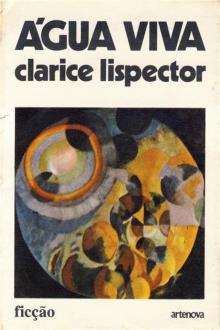 The Stream of Life
The Stream of Life The Complete Stories
The Complete Stories The Hour of the Star
The Hour of the Star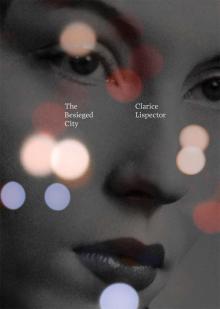 The Besieged City
The Besieged City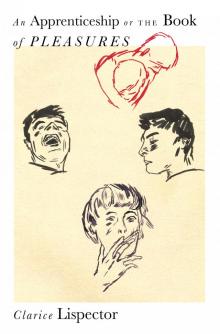 An Apprenticeship or the Book of Pleasures
An Apprenticeship or the Book of Pleasures The Chandelier
The Chandelier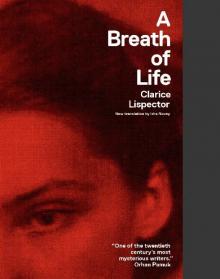 A Breath of Life
A Breath of Life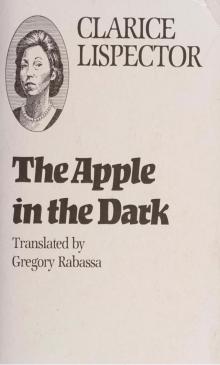 The Apple in the Dark
The Apple in the Dark Agua Viva
Agua Viva Complete Stories
Complete Stories Near to the Wild Heart
Near to the Wild Heart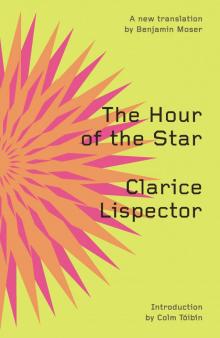 The Hour of the Star ()
The Hour of the Star ()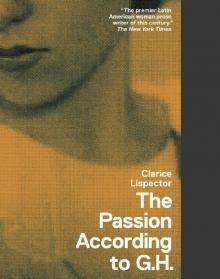 The Passion According to G.H.
The Passion According to G.H.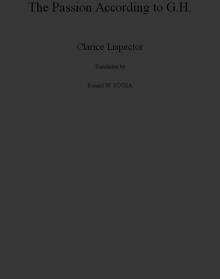 The Passion According to GH
The Passion According to GH